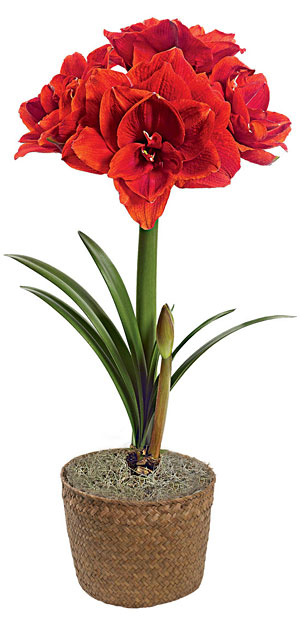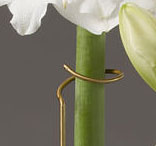






I've been gardening and writing about gardening for more than 20 years, yet I find I'm always learning new things about the plants, insects and other critters that call my backyard home. That's the great thing about gardening — it's never boring! I've worked as a landscaper, on an organic farm, as a research technician in a plant pathology lab and ran a small cut-flower business, all of which inform my garden writing. A few years ago my husband and I purchased a beautiful old Victorian house and opened a pet-friendly B&B; I've spent the last few summers renovating garden beds and adding new ones. My husband once asked me when I'll be finished, to which I replied, "Never!" For me, gardening is a process, not a goal.

Cherry Nymph Potted Amaryllis
GREEK mythology brings us the story of Amaryllis, a love-struck maiden who longed for the handsome but cold-hearted Alteo. Desperate to win his love, she pierced her heart with a golden arrow and then visited his cottage daily, shedding drops of blood along the way. On the thirtieth day, beautiful scarlet flowers bloomed along the path. Alteo was enamored, Amaryllis' heart was healed, and our favorite holiday bloom got its name. That is, until it was reclassified in the 1800s under the genus Hippeastrum.
Whatever you call them (and we'll call them amaryllis here), these dramatic tropical blooms herald the holidays with a natural beauty that only a living plant can bring. Here are 12 things you might not know about amaryllis:

Adjustable Amaryllis Stake
Find more stunning amaryllis varieties, plus unique flowering bulb baskets. There's something for everyone on your list.
Copyright © www.100flowers.win Botanic Garden All Rights Reserved